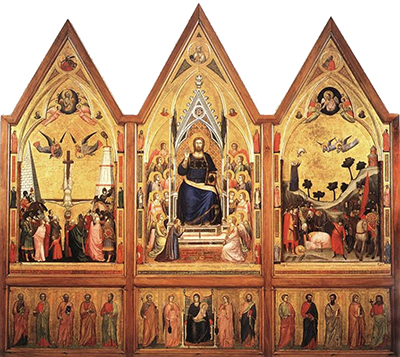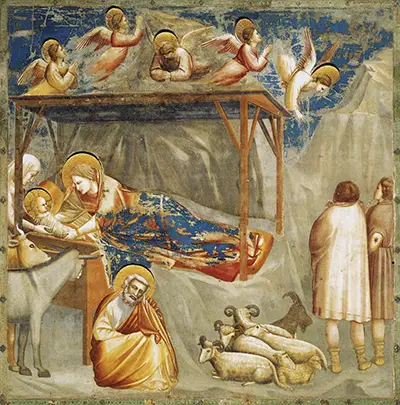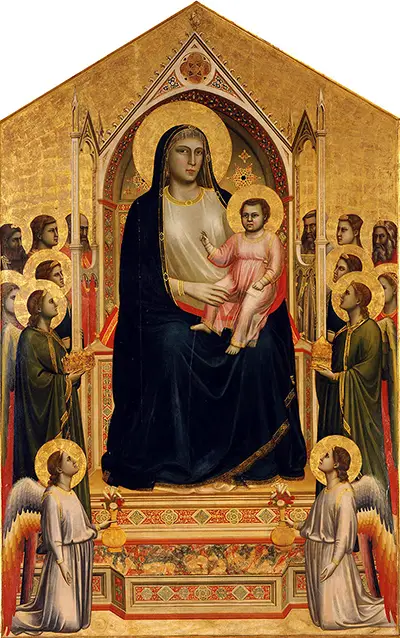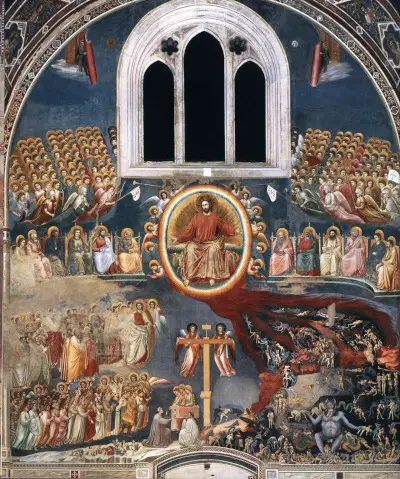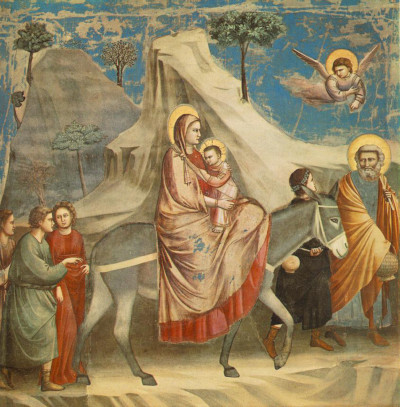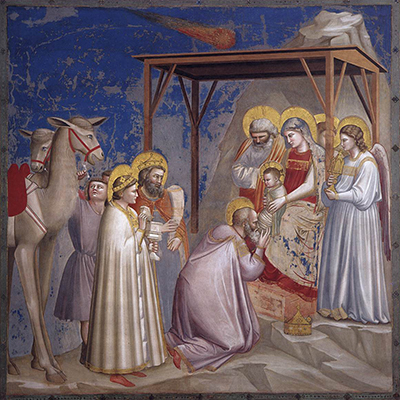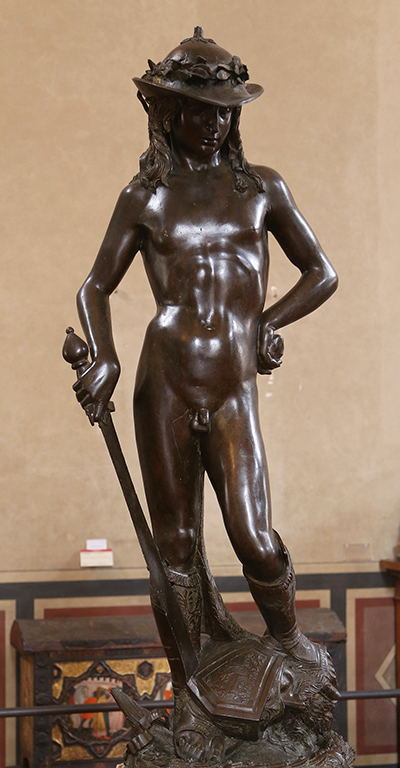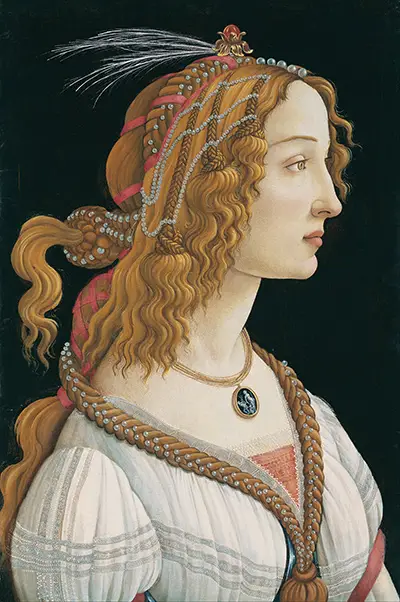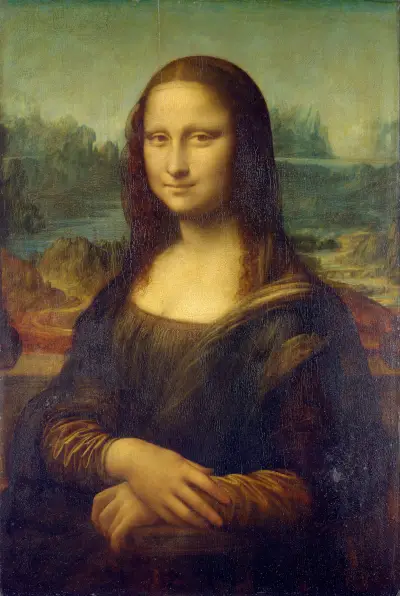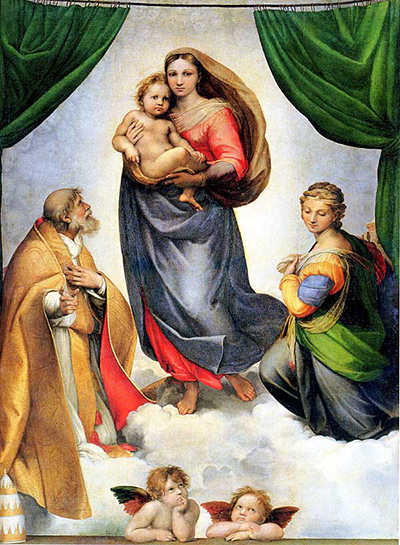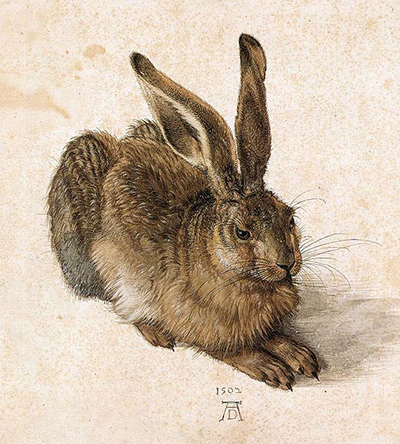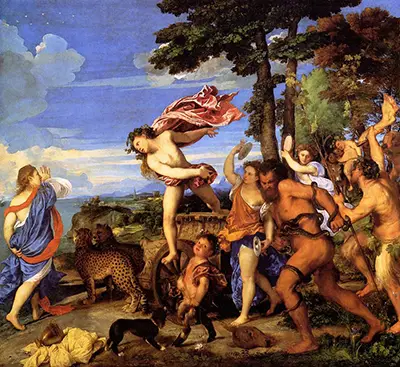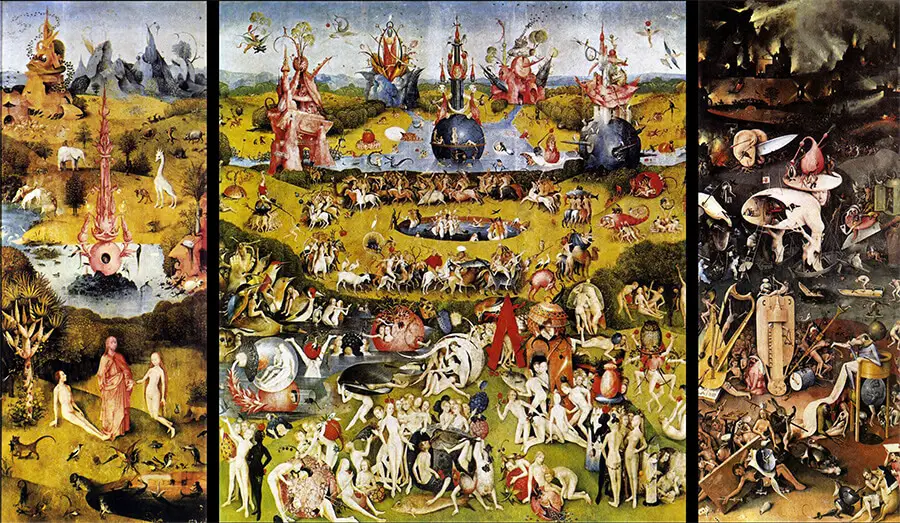The Scrovegni Chapel (Arena Chapel) in Padua, Italy is adorned with the most significant series of paintings produced by Early Renaissance artist, Giotto di Bondone. He was tasked with decorating the interior of this stunning building over a period of several years.
He would put together a large number of designs that captured scenes from the Bible and these would be worked into frescoes by a team of assistants. Churches and cathedrals at that time in Italy would compete to attract the largest congregations possible and one of their main battle grounds would be over the art and decorative touches found within each building. The intention with the Scrovegni Chapel was to make use of Giotto's highly regarded talents to incorporate some of the finest art from that period across the interior walls and to make it the most significant piece of architecture within Padua at that time. This ambitious project was completed successfully and the artworks remain in place today, having received renovation and preservation work several times over the centuries that have passed since. The paintings were produced as frescoes, and there became part of the building itself, making it very hard to safely move them elsewhere.
The nature of the fresco process meant that the artists would have to work particularly quickly to complete each painting before elements of it would dry. This made it far more sensible to bring in a large number of skilled assistants, and Giotto already employed a number of these within his studio. He could therefore plan out each series and then design the compositions for each story, before handing over some of the work to others who he trusted to implement his work. Important sections would still be tackled by Giotto, whilst he supervised other sections which he felt easier to do, or less significant to the overall series. Despite calling upon so much help, there is still an impressive consistency across the display, particularly between the individual series that concentrate on the lives of Christ and the Virgin. It was entirely normal to work in this manner during the Early Renaissance, where some projects were too ambitious for any man to complete in an acceptable length of time.
The work completed by Giotto and his assistants, along with the existing architecture around which their paintings were adapted, has helped the Scrovegni Chapel in Padua to become regarded as one of the most impressive artistic achievements ever produced in western art. This is reflected in how the area has become a UNESCO cultural heritage site and many followers of the artist or Renaissance art in general will travel from around the world to marvel at what was achieved all those years ago. This has ensured that great care is taken to preserve these historically important items, and also to protect the building itself so that the overall structure is protected for future generations to enjoy. Most paintings from that era were produced on wooden panels, which have since been moved to purpose-built museums and galleries, making this a rare opportunity to see art in its intended location. It is also quite a privilege to discover so many Giotto paintings together in a single room.
Table of Contents
- History of the Chapel
- Who Commissioned the Frescoes?
- What Subjects were covered in the Series?
- How long did the Project take?
- What Techniques did Giotto use?
- Who Worked alongside him?
- How were his artworks laid out within the Chapel?
- What are the highlights of these paintings?
- What scenes were featured from the Life of Christ?
- What scenes were featured from the Life of the Virgin?
History of the Chapel
The Arena Chapel, known by many as the Scrovegni Chapel, lies in the Italian town of Padua, which is located in the north east of the country. It was recently designated as a UNESCO World Heritage Site, acknowledging the significance of the building and particularly the fresco series inside it. A major project was constructed at the start of the 14th century which built over an ancient Roman site. A rich family would build a major palace before appending a chapel to the side. In order to make this custom architecture as impressive as possible, the family would call upon the services of Giotto di Bondone who held an impressive reputation at that time. He was also believed to be capable of managing this ambitious project whilst completing much of the work himself. The confidence that they placed in this artist was proven to be well-founded and the cycle of frescoes still found there today is considered one of the most memorable contributions ever seen in western art.
Who Commissioned the Frescoes?
Enrico Scrovegni was a wealthy banker based in Padua who bought an area of land within the town on which he intended to build a home for his family, with a small chapel close by. The chapel was therefore intended to be used as a place of private devoition for the banker and his family. His own home would be a palace of considerable size, and he also planned the chapel as somewhere that he and his wife could be buried one day. He therefore needed an artist of great stature who could decorate its interior, achieving the highest possible standard for where he was intending to rest one day. Every inch of the interior would be covered in artworks, and so Scrovegni understood that the artist would require considerable help for this project, and offered a generous payment for their work. The land itself was purchased as far back as the 6th of February, 1300, and the building work was completed in 1303. Giotto's work followed almost immediately, and was completed in around March, 1305.
What Subjects were covered in the Series?
Most of the artworks fall into two main series which focus on The Life of Christ and The Life of the Virgin. These two themes alone offer many of the most famous and iconic images found in Christian art and had already been featured by other artists for many centuries. Giotto also devoted the bottom tiers of the north and south walls to vices and virtues which were stylistically very different to the other frescoes. The latter were figurative portraits with architectural features painted into each design. These offered a little more artistic freedom than the Bible scenes whose content had already been covered by other artists many times before and so the donor would have had an expectation of what to expect to find within those designs. That said, there was still scope for innovation, such as in the perspective used, how the figures were portrayed and also the chosen palette. The 14th century was full of Christian art, with religious institutions dominating the list of patrons available to artists.
How long did the Project take?
The work of Giotto and his assistants was completed between 25 March 1303 to 25 March 1305. Enrico Scrovegni, who commissioned the chapel frescoes for his family, wanted things to move quickly and persuaded the artists to get to work immediately after the building work was completed. The completion of the architecture and interior paintings within five years is fairly impressive considering the normal length of time taken for similar projects during that period. It may have been the relatively small and simple design of the chapel which made all of this possible, but the patron did not need anything too large as it was just intended to be used by himself and his family. Giotto took on a good variety of projects across his career, many of which he actually completed entirely by himself. It would be his series that required additional help, otherwise he would become stuck working on a single project for many years, which was not ideal for either the artist or the patron.
What Techniques did Giotto use?
The frescoes were applied directly onto wet plaster, in line with the standard method of this traditional approach. The paint would then merge deeply into the plaster as it dried and this helped to make each artwork last for longer. It was therefore necessary for each painting to be entirely finished in the time that it took the plaster to dry, which added pressure to the artists, but was something that could be planned for. It also meant that many assistants were needed, otherwise only one painting could be completed at a time which would extend the production time of the overall project significantly. Giotto was also highly skilled in the use of egg tempera which he tended to use for his wooden panel artworks, and these were much easier to move around once completed. They, therefore, now are on display within major art galleries, where as the Scrovegni Chapel frescoes still remain intact in their original positions.
Who Worked alongside him?
Giotto called upon the services of around forty assistants for this considerable project, many of whom have never been identified. We are aware of an artist by the name of Taddeo Gaddi who studied under the great master and would have been involved in the frescoes of the chapel. He would have a career of his own after Giotto has passed away and was a notable member of the workshop before that. The internal style of the chapel was not as complex as most gothic chapels, making it easier for the assistants to implement the various designs produced by Giotto. He would focus on the initial compositions, as well as the key parts of each painting, leaving the supporting elements to be handled by his colleagues. As important as this project is in the history of Italian art, the fact that it came about in the very early 14th century makes it inevitable that information around those involved has been hard to find. Most contracts and financial documents related to the chapel only concern the lead artist, Giotto, and those representing the patron, Enrico Scrovegni.
How were his artworks laid out within the Chapel?
The interior features two main walls which run in parallel, and are generally known as the opposing North and South walls. They host four rows of artworks, with the upper tier covering scenes from the life of the Virgin, with Christ then featured in the middle and lower tiers. Across the bottom are the vices and virtues. There are then additional artworks which covers the ceiling above as well as the smaller arches at either end which include the entrance point and the wall at the back. The latter item is known as the Counter-façade and features a breaktaking interpretation of The Last Judgement. There are therefore over fifty different artworks in total, each of which would have to have been planned carefully so that the fresco work could be completed efficiently, as the plaster dried. Giotto may well have spent quite some time planning these designs, prior to any work starting in order to complete the project as quickly as possible once the architecture itself was finished.
What are the highlights of these paintings?
There is much to see and enjoy within the building, and so which are the highlights would be more down to personal choice than anything else. We do know that many focus on the Lamentation in particular, with its detailed composition and powerful imagery. The large Last Judgement mural, which is ten metres tall, also provides an impact that makes this item highly memorable. Aside from that, most visitors to the chapel will give relatively equal attention to each of the episodes from the lives of Christ and the Virgin, all of which have a consistent style that draws the whole series together. The vices and virtues are below eye level and often receive less attention. Their position closest to the ground also makes them more vulnerable to wear and tear, which has also made some of their colours fade more significantly than in the other tiers higher up. The vault above is also impressive, similar to a painted sky scene as one looks upwards in awe.
What scenes were featured from the Life of Christ?
The middle and lower tier of the chapel interior feature key moments in the life of Christ, leading all the way from his nativity and adoration, all the way up to his eventual crucifixion. All of the themes featured here would have been entirely familiar to the congregation, but Giotto was able to evolve these topics within Italian art by adding some of his own compositional and stylistic innovations. His use of colour and perspective were particularly noticeable, and helped to move things forwards into the next phases of the Renaissance. Items such as The Resurrection of Jesus — Noli me tangere, Ascension and also the Last Supper have become well known to art followers, even atheists, because of how other artists would also later take on these powerful subjects. Most would have taken note of Giotto's interpretations before doing so, potentially even visiting the chapel in person to see the artworks for themselves.
What scenes were featured from the Life of the Virgin?
The upper tier on the two opposing walls would capture several artworks related to the life of the Virgin, as well as Joachim. Her own nativity plus also her marriage are perhaps the most significant items here. There position makes it hard for visitors to see these paintings up close, as they are close to the ceiling display at th top and well above the natural eye line. Indeed, even the lowest tier starts from around head height of most visitors, which is better for their preservation but does make it hard to see the detail added by the artist. Thankfully, because the chapel is fairly small, one can get closer than is the case in some other buildings of this age that still exist today. Photographers have been allowed in at various points to document the beauty of these images and allow us to get a better understanding of the frescoes than we might be able to see in person on a busy day.
More Renaissance Artists



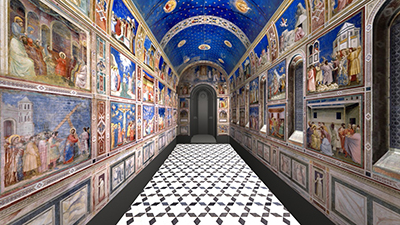
 Giotto.jpg)
 Giotto.jpg)
